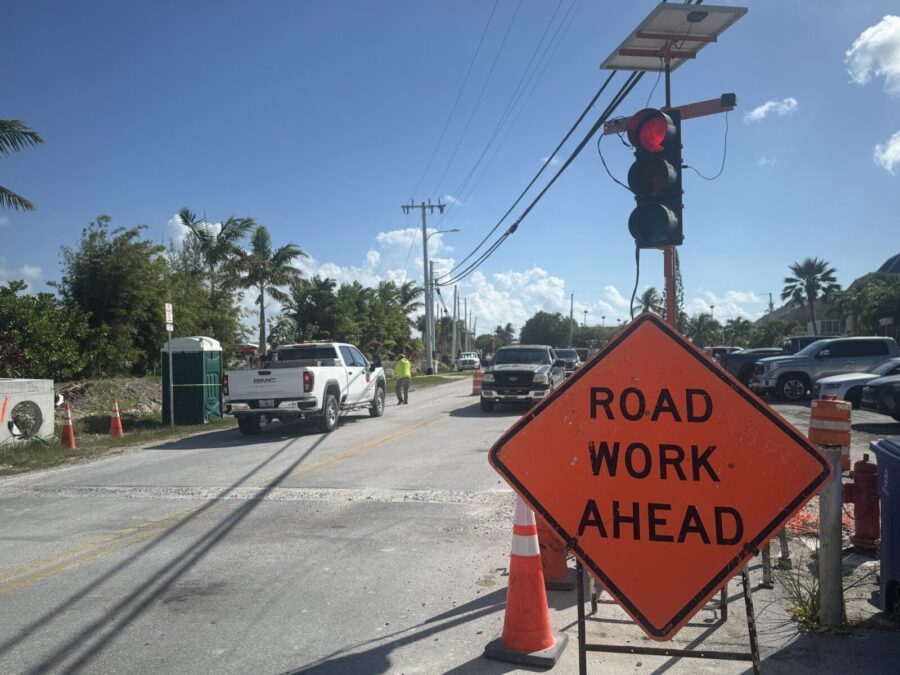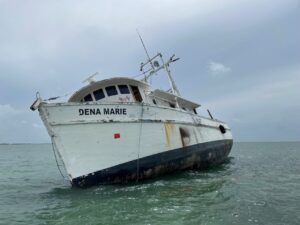Since 2016, millions of state dollars from the Florida Keys Stewardship Act have funded crucial water quality improvement acts throughout the delicate island chain.
But as another $20 million is on the way from Florida’s 2025-26 state budget, Keys governments aren’t aligned on how to split it up.
In early years of the Stewardship Act, available funds were divided and distributed based on an interlocal agreement (ILA) among Keys governments, allowing each party access to greater proportions of funds at different times based on the progress of their individual wastewater projects.
From 2016 to 2024, funded initiatives ranged from canal backfilling and muck removal to upgrades of wastewater pumps and filters, stormwater injection wells, rehab of sewer lift stations and more.
But two years ago, as the original agreement expired, state officials directed Keys governments to apply for available funding through a portal managed by the Florida Department of Environmental Protection (DEP), allowing for individual evaluation of the merits of each project.
That portal will continue for the $20 million in 2025-26 funds. But a new agreement proposed and approved in recent months by the cities of Marathon and Key Colony Beach, the Village of Islamorada, the Florida Keys Aqueduct Authority and the Key Largo Wastewater Treatment District proposes a different plan for the funding over the next five years – a dead-even split of 12.5% each among the signees, unincorporated Monroe County and the City of Key West.
The city of Layton, left out of the appropriations language for the 2025-26 funds, was also included in the draft agreement with an equal share.
“Each of the signatories to the ILA and this letter have multiple millions of water quality improvement projects. Each of us realizes that even a consistent annual $20 million in Stewardship funds won’t cover the costs of all our projects,” states a letter sent to the county and Key West by Key Colony Beach City Administrator John Bartus on July 23, along with the proposed agreement. “A fair and equitable distribution allows us all to come together and successfully lobby the Legislature to continue this amount of funding.”
But the county and Key West, the largest governments in the Keys, say they’re not on board with an even split.

In June, the six signees met to review a new agreement drafted by Marathon City Manager George Garrett, believing that a new ILA signed by all parties before June 30 would supplant the DEP portal process for the 2025-26 funds. Officials from the county and Key West did not take part in the meeting, with Monroe County Administrator Christine Hurley asking instead to delay the gathering until after the county’s budget process was finished in July.
Also in June, Hurley told the Weekly, a phone call with DEP deputy secretary Adam Blalock indicated the portal would be opened again for the 2025-26 funds in the absence of an approved ILA by June 30 – a conversation she relayed to Garrett as the new ILA was being reviewed in June.
With the state budget set to begin on July 1, Hurley said, approving a new agreement was an unnecessary rush – especially as the governing boards of some signees didn’t approve the new draft until their July meetings.
On June 29, an email sent by Hurley to all eight proposed stakeholders outlined two new propositions to distribute the funding, based on either each jurisdiction’s population or the cost of projects needed by each city, provided in meetings for the federally-backed Florida Keys Water Quality Improvement Program (FKWQIP).
The population-based plan would see Key West and unincorporated Monroe receive $6.4 million each, based on populations of 27,040 and 38,702, respectively. Awards for the other six entities would range from $2.4 million for Marathon – a population of 9,926 – down to $192,260 for Key Colony Beach and $48,124 for Layton.
Splits in the need-based model would be even greater, with the county to receive $11.5 million and Key West at $4.6 million – while Key Colony and Layton would receive $119,760 and $34,217, respectively.
“While Monroe obviously prefers the option based on need, we are willing to support … a distribution based on population as shown in Option 1,” Hurley wrote in the June 29 email.
Key West City Manager Brian Barroso agreed, replying that the Southernmost City would “remain consistent with a ‘fair share’ distribution and can not support the current ‘equal’ allocation at this time.”
In an email exchange between Bartus and Hurley, widely distributed to media outlets by Bartus, Hurley argued that a $2.5 million allocation each year would exceed the costs of projects anticipated by smaller cities such as Layton and Key Colony Beach. Bartus disputed this claim, stating that figures used for project costs in Key Colony were simply a one-year request figure.
“Participation in the ILA ensures that we all come to the table, discuss our needs, and work together,” Bartus wrote. “Every party to the ILA has its own best method for determining our needs, and not one of us needs an ‘oversight’ or ‘coordinating’ agency.”
Speaking with the Weekly on July 28, Garrett said Marathon still believes the ILA is “the way to go,” but that he believed there was “room to talk” about the exact division of funds. The city now plans to use the DEP portal for this year’s requests, he said.
“The whole premise is that we’ve always done best when we work together to get appropriations,” he said. “The ILA sets a standard in which none of us are arguing with each other, because we always know, if there is an appropriation, what percentage we’re going to get.”
“We all have way more than what the equal share would be in projects,” Bartus said via phone. “Since in Key Colony, we didn’t get cut into those big pots of money years ago under FKWQIP, we’re due a bit of an equal share. (The new ILA) is a great way to have a nice collaborative approach to this money every year.”
Hurley told the Weekly that “at this point, none of us will lose with the portal.”
“If we are successful to get the $20 million, then we can all apply for our individual projects, and (the state) will select them based on the project merits,” she said.


















